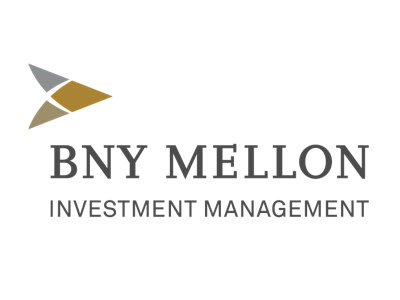John Bailer has managed US Equity income funds since 2005 and has an established, clear and effective investment process
The fund has typically performed strongly when its value-style of investing has been in favour
The fund could add US exposure to a global portfolio or work well alongside other more growth focused US funds
The fund was recently added to our Wealth Shortlist of funds selected for their long-term performance potential
How it fits in a portfolio
The BNY Mellon US Equity Income fund aims to maximise total returns by growing both the income it pays to investors and its capital value. The fund can invest across the US market, but it tends to be invested in large companies that trade at attractive valuations that provide a balance of income today and dividend growth potential for the future. We think the fund could be a good way to add US exposure to a global portfolio or could sit alongside other US funds focused on more growth-style companies.
Manager
The fund is managed by John Bailer, a seasoned investor with over 20 years of experience under his belt. Bailer entered the industry in 1992 before becoming lead manager of the BNY dividends strategy in 2005. He’s now taken the success of this fund and in 2017 launched the UK version BNY Mellon US Equity Income Fund. He also runs the income sleeve for the BNY Mellon VIF Growth and Income fund and is back-up manager on the BNY Mellon US Dynamic fund. Given the commonality of approach, we’re comfortable that this is a manageable workload.
Bailer is supported by back-up managers Brian Ferguson and Keith Howell in managing this fund. Ferguson has over 20 years of portfolio management experience and is a senior portfolio manager and research analyst at Mellon Investment. He’s managed the BNY Mellon Dynamic Value fund since 2003, a fund where Bailer is the back-up manager. Keith Howell joined BNY Mellon in 2006 as an analyst covering various sectors including financials, technology, and industrials. Howell became back up manager in 2021 after 15 years as an analyst.
We think Bailer is well resourced to focus on the job in hand. Along with his back-up managers, he and the team are supported by around 20 analysts.
Process
Bailer aims to invest in companies that he believes can deliver a balance of a good income today, and dividend growth in the future. The process starts with a broad screen of the Russell 1000 as a good representation of the large-cap US market. Bailer uses this to identify businesses with high quality characteristics. These businesses will typically have strong balance sheets and free cash flows, sustainable and well covered dividends, and attractive revenue and earnings growth rates.
Bailer spends a lot of his time working with the wider analyst team at BNY Mellon as part of the idea generation process. This includes detailed analysis of companies to determine how much he believes the company’s shares are actually worth, and spotting those that are undervalued. Bailer wants to invest in companies that are trading at share prices lower than he feels they are worth in the long term, possibly reflecting some short-term headwinds. The manager works with analysts to consider what the upside and downside potential exists.
Bailer will also look at the whether the company pays a dividend to its investors and whether he believes the dividend will grow over time. Every company the fund invests in must pay a dividend at the point of purchase. However, there have been special occasions where a company has cut its dividend and remained in the portfolio if the manager believes it will be re-instated in the future. Bailer believes if a company is paying a dividend, then this is a good indication of whether the management are allocating capital appropriately.
This process leads to a portfolio of 30-60 companies, generally split across three buckets. These buckets are valuations, momentum, and quality. The fund can be quite concentrated, so each investment can have a big impact on performance, increasing risk. There is also the flexibility to use derivatives which increases risk.
Over the last 12 months, Bailer has reduced the fund’s investments in the energy sector as well as the technology sector. This has funded increases to investments in the materials, communication services and industrial sectors.
In recent months, Bailer has initiated a position in industrial companies Hubbell, and Johnson Controls. Bailer also started a position in telecommunication company AT&T and metal and mining company Newmont. Bailer also does utilise his ability to invest outside of America. Over the last 12 months Swiss healthcare company Novartis was added. Some names also did exit the fund, reflecting Bailer’s views of better opportunities elsewhere in the market. This included technology company Intel.
Culture
BNY Mellon is a large, US-based firm so the managers have a lot of resources at their disposal. In September 2021, Mellon Investments merged its equity and multi-asset teams into Newton. While this has not impacted the way Bailer invests for this fund, it has given him access to a larger pool of research analysts that help with idea generation.
The managers are incentivised in a way that aligns their interests with those of long-term investors, which we like. However there have been some significant fund manager departures from the wider Newton and BNY business in recent years and we continue to monitor this situation closely.
ESG Integration
The team at BNY Mellon (formerly Newton) believes responsibly managed companies are better placed to achieve sustainable competitive advantage and provide strong long-term growth. They’ve invested a significant amount of time and resource into their Responsible Investment proposition in recent years, including the hire of Therese Niklasson, the firm’s Global Head of Sustainable Investment, who we have long held in high regard.
A dedicated Responsible Investment team exercises the firm’s voting rights, coordinates engagement with investee companies and contributes to public debate on ESG matters. The team reports on their engagement progress in their annual Responsible Investment and Stewardship report, and their quarterly ‘ESG meeting activity’ report (both available on the Newton website). They also provide a voting report, which provides detailed rationales for votes against management and abstentions.
All fund managers have access to a Responsible Investment app which centralises a variety of research providers’ data, as well as their own, to help identify material ESG and sustainability issues for a single company. It also includes a quantitative net-zero assessment tool to support their analysis of each company’s net zero transition plans.
In recent years, the firm has launched a sustainable range of funds which take ESG analysis further. They utilise the firm’s thematic research framework to identify and exploit sustainable investment themes. Within the Sustainable range, the Responsible Investment team has power of veto over companies held in the portfolios. This means the final decision is separated from the managers and provides an additional layer of challenge.
Cost
The fund usually has an annual ongoing charge of 0.82%, but with a 0.20% saving it’s available to HL clients for 0.62%. The HL platform fee of up to 0.45% per year also applies, except in the HL Junior ISA, where no platform fee applies. Charges are taken from capital, which can increase income but reduce the potential for capital growth.
Performance
Over Bailer’s career managing US equity funds stretching back to 2005, he’s delivered long term outperformance of the IA North America peer group average.
The fund has performed well over the last five years but has marginally underperformed its peer group. It’s returned 66.33%* versus 75.07% for the IA North America sector average. For a lot of this period the manager’s value-style of investing has been out of favour, posing a headwind to performance. Past performance isn’t a guide to the future.
Over the last 12 months to the end of September the fund has risen by 12.80%, compared with a return of 20.35% for the IA North America sector average. With inflation having likely now peaked and with interest rates expected to fall, the fund’s value-style of investing has been a headwind since the start of 2023.
The fund’s investment in materials company CRH was the biggest contributor to returns followed by utility company Constellation Energy and gold mining company Newmont Corp. On the other hand, investments in lottery and gaming company International Game Technology was the largest detractor, as well as technology companies Cisco and Intel.
We think Bailer has built a strong track record in US income investing and has done a good job over the long term for patient investors. The fund offers something quite different to some of its peers in the IA North America sector and Bailer is well supported and resourced for the task at hand. This gives us confidence in the fund’s long-term prospects.
The fund currently yields 2.18%. Although income is not guaranteed, and yields aren’t a reliable indicator of future income.
Annual performance table
30/09/2019 - 30/09/2020 | 30/09/2020 - 30/09/2021 | 30/09/2021 - 30/09/2022 | 30/09/2022 - 30/09/2023 | 30/09/2023 - 30/09/2024 | |
|---|---|---|---|---|---|
BNY Mellon US Equity Income | -17.71% | 41.08% | 18.81% | 6.90% | 12.80% |
IA North America | 9.02% | 26.66% | -2.08% | 7.59% | 20.35% |


